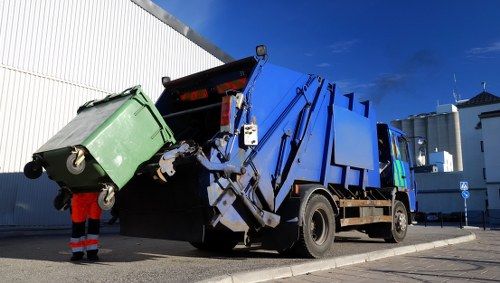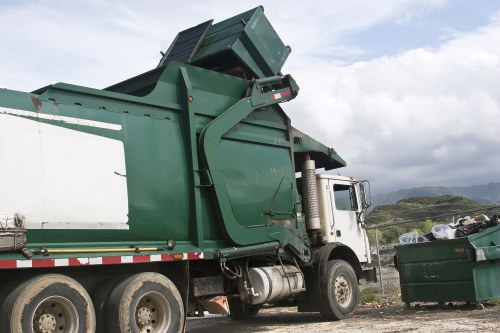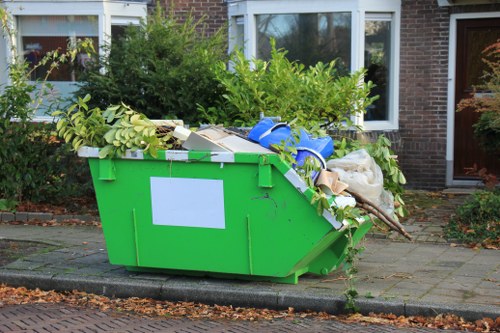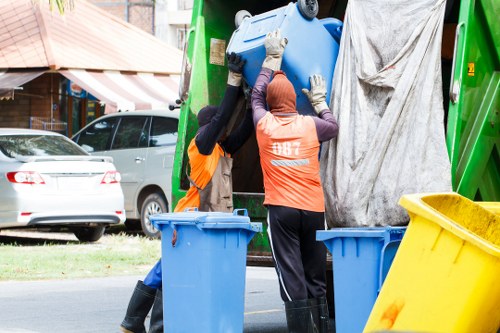Waste Recycling in Clearance Sucks: Unveiling the Hidden Challenges
Introduction to Waste Recycling in Clearance

In today's fast-paced world, clearance sales and waste recycling go hand in hand. However, the phrase "Waste Recycling in Clearance Sucks" resonates with many who have experienced the inefficiencies and frustrations associated with these processes. This article delves deep into the intricacies of waste recycling during clearance operations, highlighting the challenges and exploring potential solutions.
Clearance events are designed to move inventory quickly, but often, the waste generated is not managed effectively. From unsold goods to packaging materials, the volume of waste can be overwhelming. The lack of streamlined recycling practices not only impacts the environment but also adds to the operational costs of businesses.
Understanding the root causes of why waste recycling in clearance struggles is crucial for developing better strategies. This exploration will cover the environmental, economic, and logistical aspects that contribute to the current state of waste management in clearance settings.
The Problems with Current Clearance Recycling Practices

One of the primary issues with waste recycling in clearance is the inefficiency of sorting and processing. Often, waste materials from clearance sales are mixed together, making it difficult to separate recyclable items from non-recyclable ones. This lack of proper sorting results in recyclable materials ending up in landfills, negating the very purpose of recycling.
Additionally, the temporary nature of clearance sales means that there is little incentive for businesses to invest in robust recycling systems. The focus remains on clearing out inventory as quickly as possible, sidelining environmental considerations. This short-term approach hampers the development of sustainable waste management practices.
The lack of standardized recycling protocols across different clearance events further exacerbates the problem. Without uniform guidelines, each event handles waste disposal differently, leading to inconsistencies and inefficiencies. This fragmented approach makes it challenging to implement large-scale recycling initiatives effectively.
The Environmental Impact of Inefficient Recycling

Inefficient recycling during clearance contributes significantly to environmental degradation. When recyclable materials are not properly processed, they contribute to the mounting waste crisis. Plastics, paper, and metals that could have been reused or repurposed instead accumulate in landfills, taking years to decompose and releasing harmful substances into the environment.
Moreover, the carbon footprint of poorly managed waste is substantial. Manufacturing new products from raw materials consumes more energy and resources compared to recycling existing ones. By neglecting recycling during clearance, businesses inadvertently increase their environmental impact, contributing to climate change and resource depletion.
The mismanagement of waste also affects local ecosystems. Landfills and improperly disposed waste can lead to soil and water contamination, disrupting wildlife habitats and posing health risks to nearby communities. The long-term consequences of these environmental impacts are far-reaching and demand immediate attention.
Challenges Faced by Clearance Services

Operational Hurdles
Clearance services often operate on tight schedules, aiming to liquidate inventory swiftly. This urgency leaves little room for implementing effective recycling measures. The lack of time and resources dedicated to waste management means that recycling is often an afterthought rather than an integral part of the process.
Financial Constraints
Investing in comprehensive recycling systems can be costly. For many businesses running clearance sales, allocating funds for waste management is a challenge, especially when profits are already tight. This financial limitation forces companies to prioritize immediate revenue generation over sustainable practices.
Logistical Issues
Coordinating waste collection, sorting, and recycling during clearance events presents significant logistical challenges. Limited space, fluctuating waste volumes, and the need for specialized equipment or partnerships with recycling firms complicate the process, making efficient recycling a daunting task.
Case Studies: Where Clearance Recycling Falls Short

- Retail Sector: Large-scale retailers often generate vast amounts of waste during clearance sales. Without proper recycling protocols, much of this waste ends up in landfills.
- Electronics Clearance: Disposing of electronic waste requires specialized recycling processes. However, improper disposal during clearance leads to hazardous materials polluting the environment.
- Fashion Industry: Fast fashion clearance results in significant textile waste. The lack of textile recycling initiatives exacerbates the environmental impact.
Potential Solutions and Improvements
Implementing Standardized Recycling Protocols
Adopting standardized recycling protocols across all clearance events can streamline waste management. Clear guidelines on sorting, collection, and processing ensure that recyclable materials are handled appropriately, reducing the volume of waste ending up in landfills.
Investing in Recycling Technology
Advancements in recycling technology offer efficient ways to process waste. Investing in automated sorting systems, waste-to-energy technologies, and other innovations can enhance recycling rates during clearance operations.
Partnering with Recycling Firms
Collaborating with specialized recycling firms can alleviate logistical challenges. These partnerships provide access to expertise, resources, and infrastructure necessary for effective waste management, ensuring that clearance waste is handled responsibly.
The Role of Technology in Enhancing Recycling Efficiency
Technology plays a pivotal role in transforming waste recycling during clearance. Automated sorting systems can accurately separate recyclable materials, reducing human error and increasing efficiency. Additionally, data analytics can help businesses track waste generation patterns, enabling them to implement targeted recycling strategies.
Moreover, mobile applications can facilitate waste management by connecting clearance events with recycling services seamlessly. These technological solutions not only streamline operations but also promote transparency and accountability in waste handling practices.
Investing in sustainable technologies is essential for overcoming the current shortcomings in waste recycling during clearance. As technology evolves, it offers new opportunities to enhance the effectiveness and sustainability of recycling efforts.
How Consumers Can Contribute to Better Recycling

Awareness and Education
Consumers play a critical role in the recycling ecosystem. By being aware of the importance of proper waste disposal and recycling, individuals can make informed decisions during clearance sales. Educating consumers about what can be recycled and how to sort waste effectively is a key step towards improving recycling rates.
Responsible Purchasing
Making responsible purchasing choices, such as buying durable and recyclable products, can reduce waste generation. Consumers can also support businesses that prioritize sustainable practices, encouraging more companies to adopt effective recycling measures during clearance.
Participation in Recycling Programs
Engaging in community recycling programs and initiatives helps create a supportive environment for sustainable waste management. By participating in these programs, consumers contribute to a collective effort in enhancing recycling efficiency during clearance operations.
Future Perspectives on Waste Recycling in Clearance
The future of waste recycling in clearance holds promising advancements. With increasing awareness of environmental issues, businesses are gradually recognizing the importance of sustainable practices. Innovations in recycling technology, coupled with stricter regulations, are set to transform the landscape of waste management during clearance events.
Furthermore, the integration of circular economy principles encourages businesses to minimize waste and maximize resource utilization. By adopting these principles, clearance sales can become more environmentally friendly, reducing the negative impact of waste on the planet.
As the global community continues to prioritize sustainability, the efforts to improve waste recycling in clearance will gain momentum, paving the way for a greener and more responsible future.
Conclusion: Addressing the Sucks in Waste Recycling
Waste recycling in clearance takes a hit due to various inefficiencies and challenges. From operational hurdles and financial constraints to technological gaps, the current practices fall short of achieving sustainable waste management. However, by implementing standardized protocols, investing in technology, and fostering collaboration, significant improvements can be made.
Consumers also hold the key to driving change. Through responsible purchasing and active participation in recycling programs, individuals can support businesses in their efforts to enhance recycling practices during clearance. Together, these collective actions can transform the landscape of waste recycling, turning the narrative from "Waste Recycling in Clearance Sucks" to a story of environmental responsibility and sustainability.
It's time to take action. Contact us today to learn how you can contribute to more effective waste recycling practices in clearance operations, and let's work together towards a greener future.